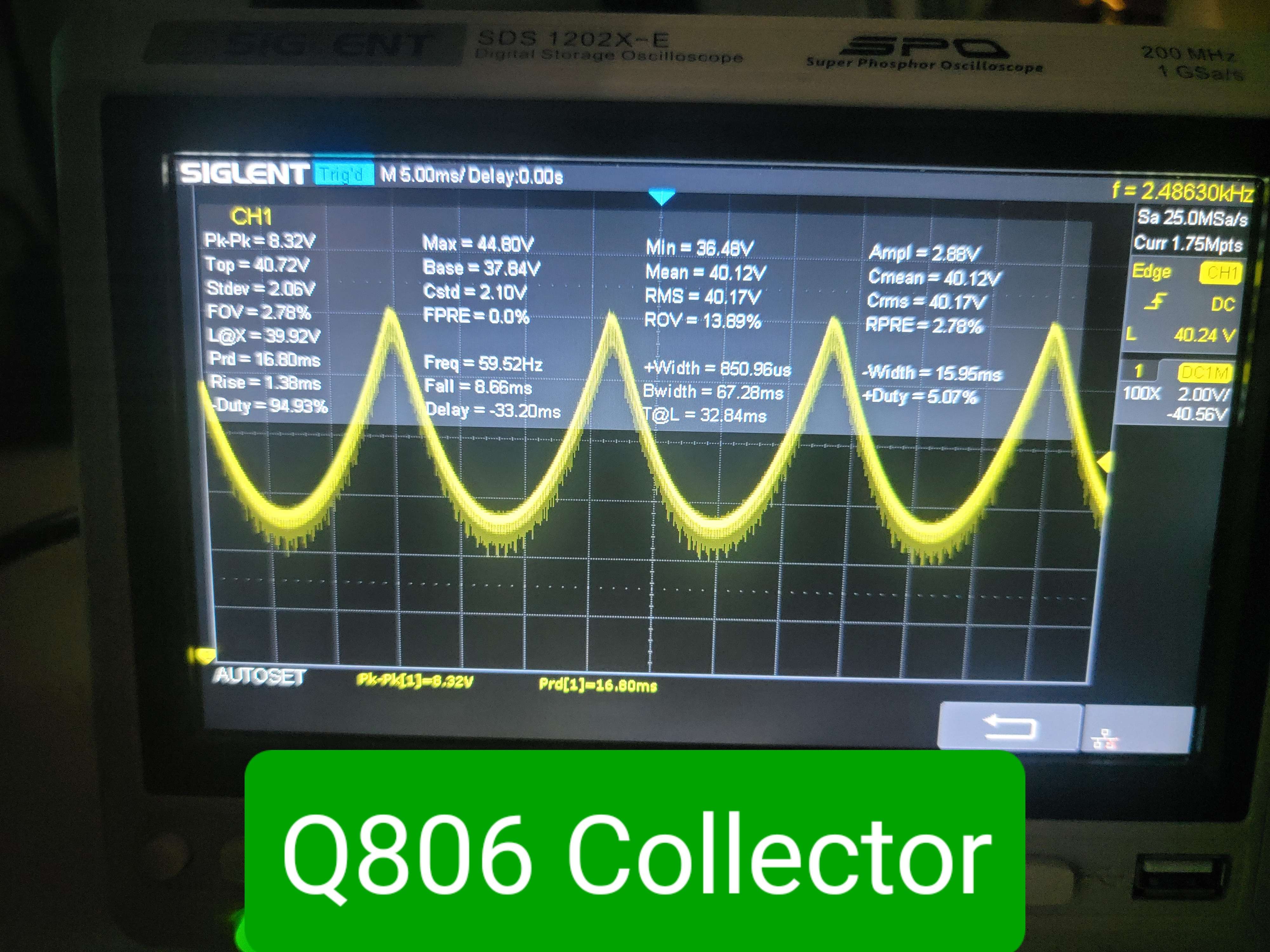OK I have spent more time than I ever wanted to on this... But I finally have some news/info to share. It's not a solution yet but it feels like I am closer. Sorry in advance for the huge images but it doesn't seem like this forum supports width parameters on image embeds, and doesn't have a spoiler tag for hiding large content.
First I had to narrow out the possibility that I had gotten a bad replacement IC804 from eBay, or that my Q806 transistor was somehow failing. In order to rule that out, I took working copies of both parts from a working 1271Q and swapped them into the bad 1271Q.
There was no change. This means a IC804 with no output is a sign of bad inputs - NOT a failed IC.* The Q806 output waveform is CRUCIAL. It can be observed with an oscilloscope at the collector of Q806. A working 1271Q will have a drape-looking 60Hz ~8 vpp (base ~38v) wave. Eventually I will share all of my waveform images I took, but for now I just want to focus on the relevant ones (see bottom of post).
* If you see either nothing or some kind of 15Khz waveform as the Q806 collector output above, then your pinamp IC is not outputting anything. You're just looking at noise.
So why isn't IC804 outputting anything? First we need to understand how IC804 works. It is a TDA1082, and looking at the datasheet you can see the main inputs are pin 10 and 11, which go into a differential amplifier. Think like an op-amp. Sony's implementation of this IC in their pinamp circuit is almost a direct copy of the example circuit in the datasheet - they just eliminated the trapezoid adjustment, added an external VBOW/VANG adjustment on pin 7/8, and added a (pin) phase shift adjustment on pin 11.
I arranged all of the "good" 1271Q waveforms on the datasheet so we can better understand how they work together:
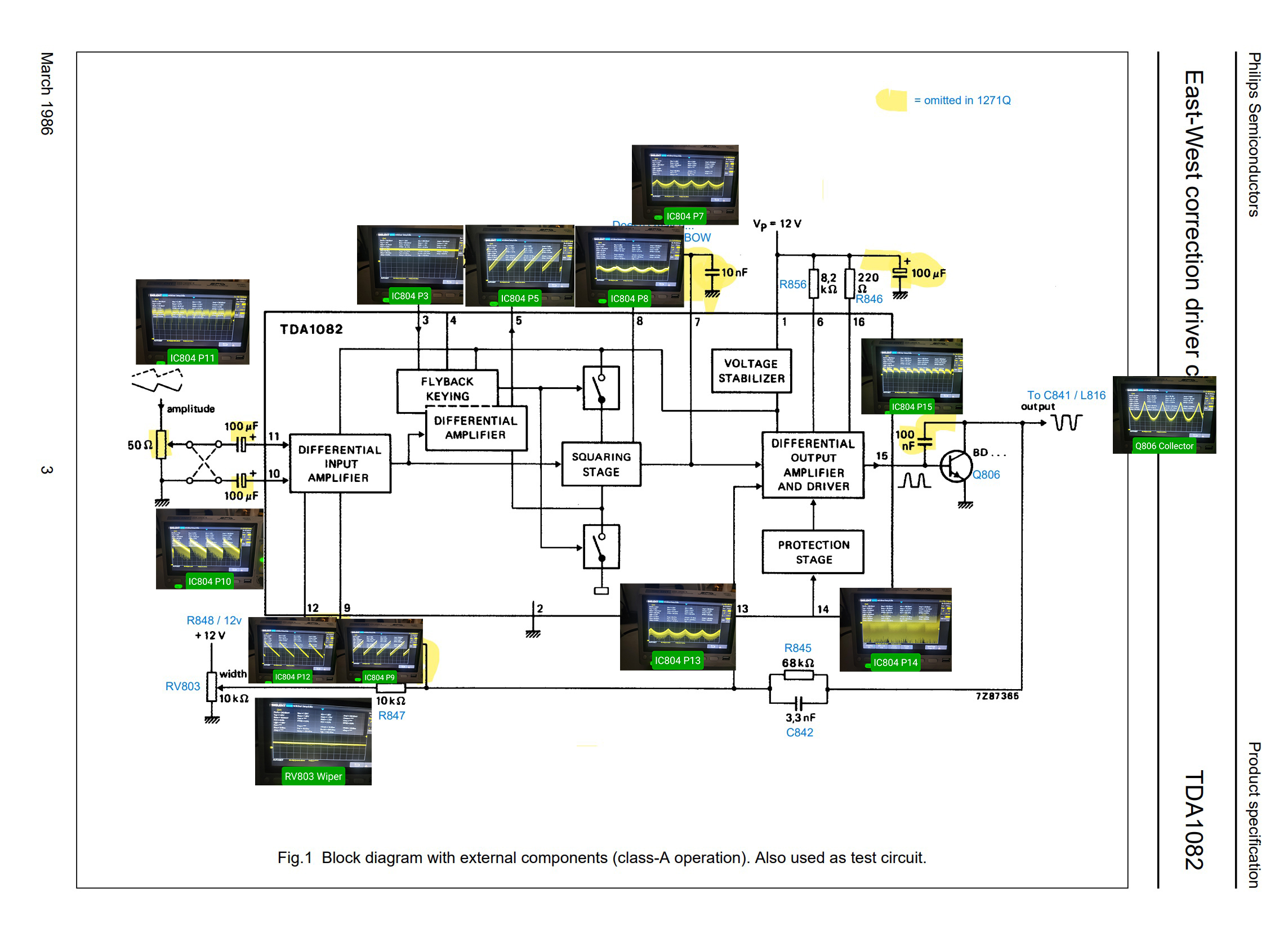
The main players here are the inputs on pin 10 and pin 11. Pin 10 is a sawtooth waveform coming from the vertical oscillator, its amplified and output from IC504. Not only does this wave need to make it all the way to IC804 pin 10, but its amplitude, offset, and all other characteristics are EXTREMELY important. If they are off even a little bit, it is enough to cause IC804 to stop outputting. The problem with all of these 1271Qs, at least my guess, is that this waveform is malformed from one or more other components failing.
When this waveform is wrong, and IC804 stops outputting, it heavily biases the entire horizontal width circuit incorrectly, which is why your raster width becomes squished and the N H WIDTH control barely does anything anymore.
I was able to prove some of my hypothesis by desoldering ('floating") pin 10 of IC804 to take the bad waveform input out of the equation.
If you do this on your bad 1271Q, and my hunch is correct, your N H WIDTH pot should start working again and you should be able to get full raster width - you just won't have any working pinamp adjustments.One of the first things i did when starting diagnostics comparisons between a good and bad 1271Q was compare every single pin's waveforms on IC804 - so why didn't I notice anything wrong with Pin 10 early on? It seems the problems are only evident when you FLOAT THE PIN first to take it out of circuit with the rest of the pinamp circuit. This allows you to view the unaltered input waveform before it gets coupled to anything else further down the circuit. Once I did a floated pin 10 comparison between the two PVMs, the differences were obvious. The bad sawtooth waveform has what appears to be a variable DC offset, it slowly drifts up and down on my scope by several volts, and it seems very noisy/jumpy. On the good PVM, this waveform is rock-solid with no drifting or jumping.
Here is what a good pin 10 input waveform should look like when floated from the IC input (i.e. I took the measurement from the empty pad):
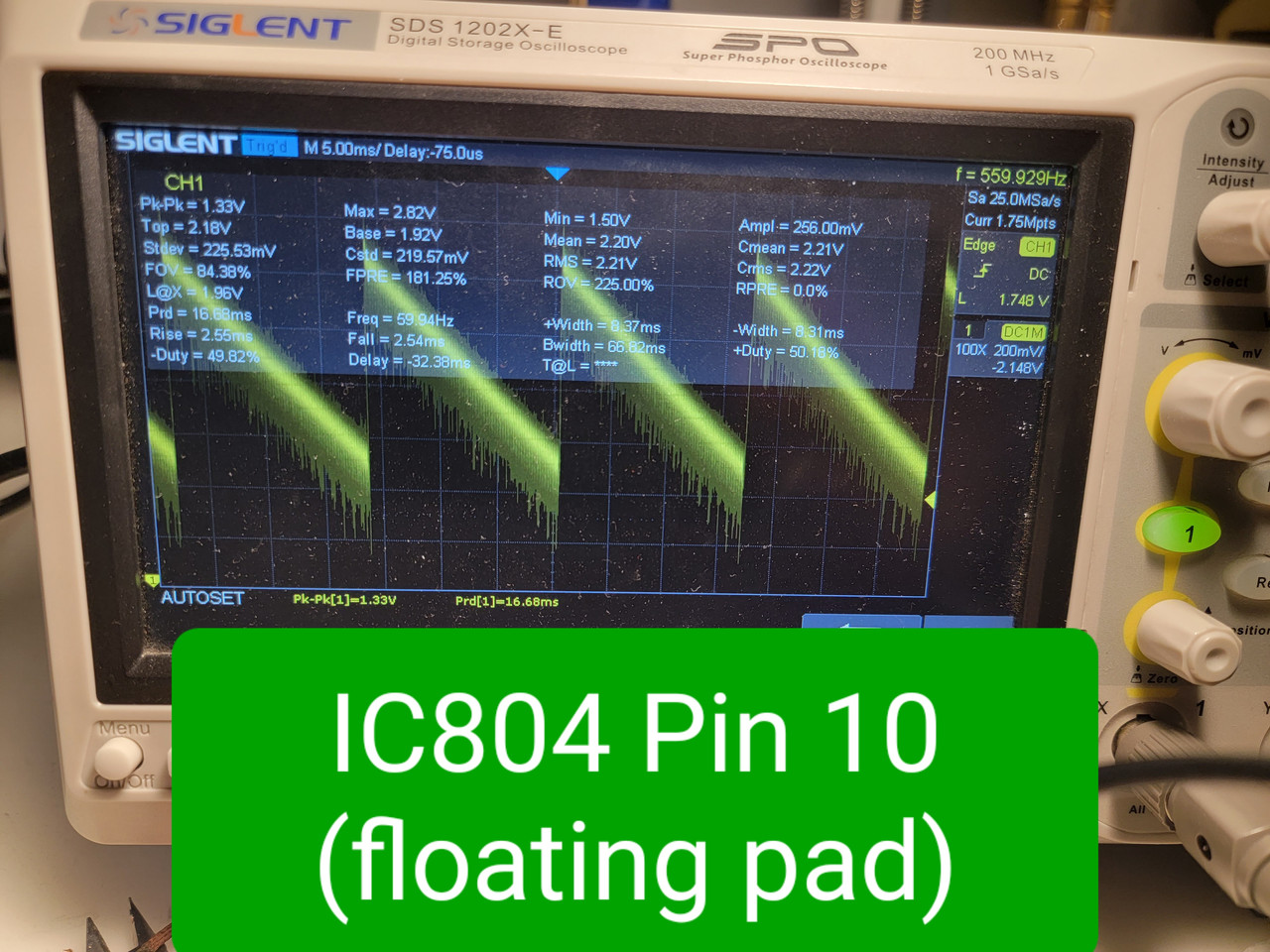
Generally if I see weird DC offsets I would blame a capacitor - but there are people in this thread who have already recapped their whole 1271Q and didn't solve the issue. Personally I have replaced every electrolytic (they were all within spec) and manually checked every ceramic/film capacitor on Pin 10's circuit (they were all fine) - this made absolutely no difference to the problem. Pin 10 is coupled to the VBOW/VANG circuit at C522, which I have not recapped. I suppose the problem could be down there, but those adjustments seem to be working fine and that area of the board is not particularly easily accessible so I am avoiding that for now.
So with all of that in mind, I am pretty clueless right now on what the problem component could be here. For research purposes I actually tried to eliminate the DC offset myself by adding a ceramic capacitor in series right before Pin 10 of IC804, and the results were fascinating. Once I eliminated the DC offset, IC804 woke up and started outputting a waveform via Q806, and I was able to freely adjust N H WIDTH, PIN PHASE, and several other adjustments. The pinamp distortion improved significantly too. However, this is not a solution because the waveform, although present now, is still not correct when compared to the good PVM - and this is why the geometry is still wrong. Here is what I see on screen:
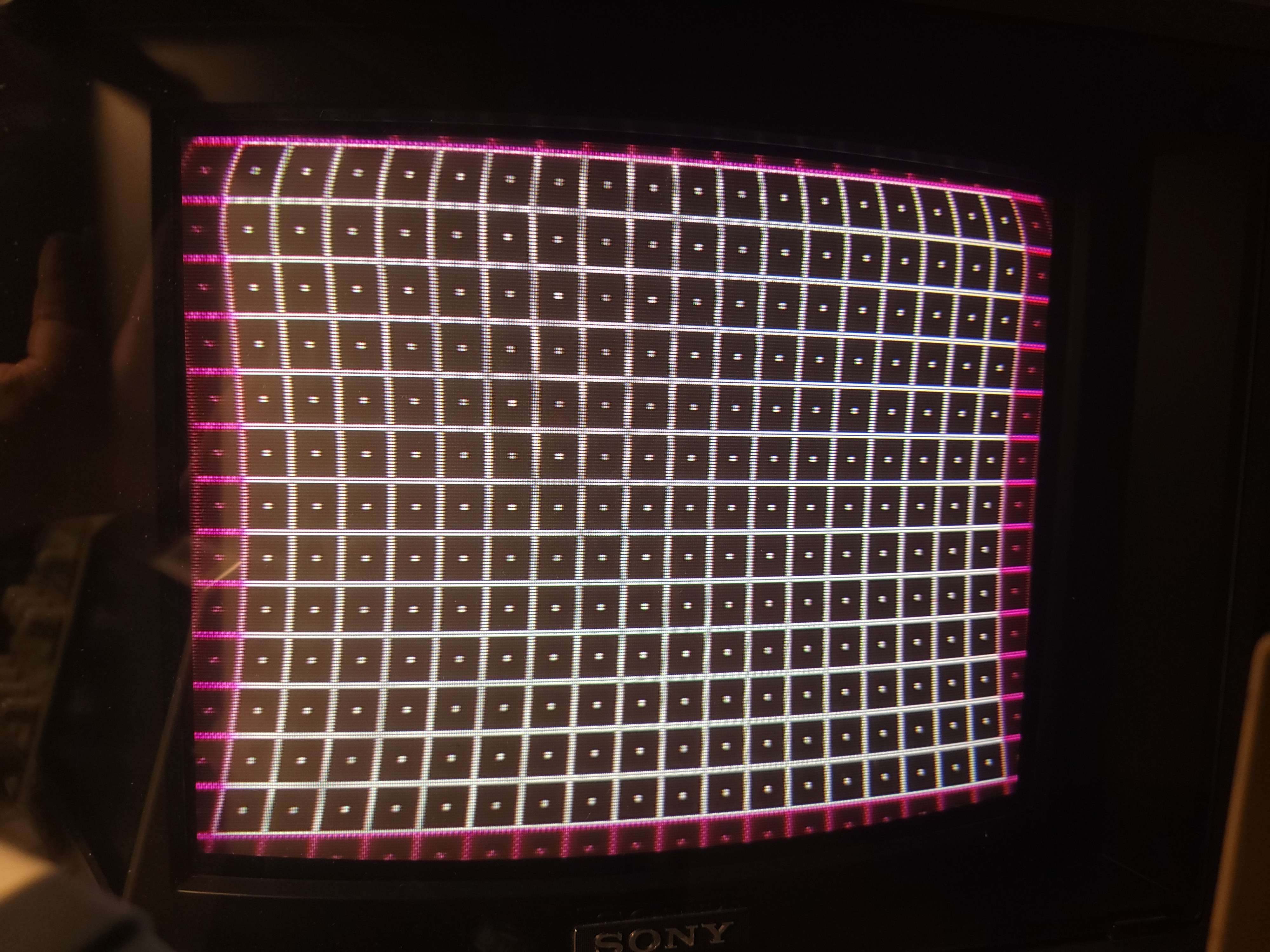 Here is what the incorrect Q806 collector waveform looks like that generated that output on the screen:
Here is what the incorrect Q806 collector waveform looks like that generated that output on the screen: 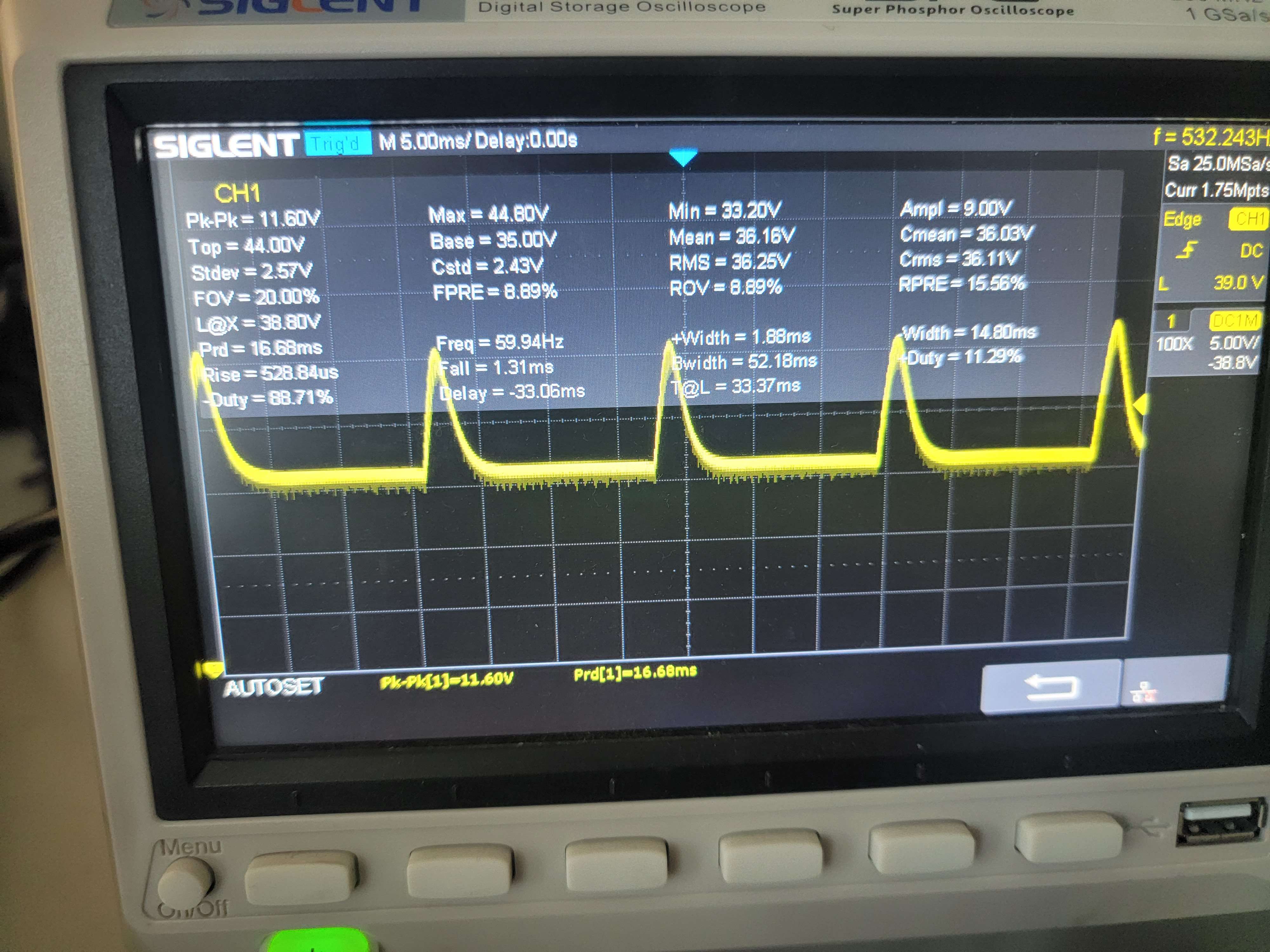 And here is what a perfect waveform at Q806 collector looks like, for reference. This is the magic sauce:
And here is what a perfect waveform at Q806 collector looks like, for reference. This is the magic sauce: 